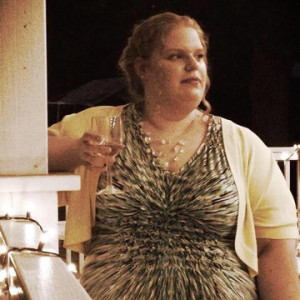Mary Stike: At the beginning of your essay “What To Do On a Day Like This” you write, “…running was becoming my M.O.” Does this idea carry through the rest of the work? How so? Is this a description that is an underlying theme in your writing?
Danielle: Running occurs several times in the essay. I run from the state then run later to my room. There’s the assumption that the children run at some point as well as the shooter running away from the scene. Running plays a big role in the rest of my work and I attribute it to my Appalachian heritage. Growing up in West Virginia, I’ve felt the desire to stay and leave simultaneously. I didn’t want the label of the region to define who I was as a person, but even more so as a writer. I write what I know. My Appalachia is different than the Appalachia depicted in the books I read when I was younger. When I ran to Connecticut for Graduate School, I was running because of my misunderstanding of the region where I grew up. Similarly, I carry the same notion into my writing. Many of my characters run because they don’t understand the importance of their role in their larger setting.
Mary: You have a great strength of writing details into your work. Idina Mendel’s gritty voice, the naked mannequins, the scent of woodsy-musk and peppermint on your friend, the LORD tattoo on the man at McDonald’s all contribute to the depth of this piece. Do you think the use of this level of detail in a work is important? Why or why not?
Danielle: Detail is important in how the reader sees and interprets a piece of writing. I turned to the details of the piece to help me remember the ordinary on a day that turned into a national tragedy. The details I include are what I remember about my journey home on December 14th; they are things I can name and recognize while surrounded by the unrecognizable. One detail that still sticks out to me are the naked mannequins. When I first drafted the piece, the mannequins were just there in a storefront. As the essay took shape, the mannequins took on more meaning, a foreshadowing of sorts to the events of the day. The mannequins are a great example of trusting first instincts when writing because in later drafts details will hold more meaning than the author originally intended.
Mary: In the face of the tragedy, the “arm to shoulder chain” of children seemed lacking in comfort to you. When you arrived home, your dad places his hand on your back when he says “You’re lucky.” Please comment on the strength of family ties and comfort that influence you in the piece.
Danielle: Not only am I a very family oriented person, I also am drawn to reading and researching the types of family structures. I grew up in what is considered a nuclear family structure, where Sundays and Holidays were spent around a dining room table, passing stories between generations. During my time away from home, I grew closer to my family. I called many immediate family members multiple times a day. The events at Sandy Hook shocked the nation and left us reaching out to hold our kids, parents, siblings, etc. As a nation, we were numb; I was numb. I kept revisiting the idea of physical touching between family members because I too spent months yearning for the physical touch from a family member or friend. Seeking comfort in a hand, a hug, or an arm around the shoulder from my family meant knowing I wasn’t alone. Those children needed to know they were not alone.
Mary: How did your chance encounter with this horrific event transform you as a person? How does your writing reflect that transformation?
Danielle: My chance encounter reminded me not to get so caught up in the small stuff. When I left that morning, I was unsure if I had made the right decision to leave Connecticut. For five months I swam in the “what ifs” and how my decision to leave would affect my future. I was lost, stressed, and depressed until I pulled into the driveway of my childhood home. I thought about the elementary school across the street and my dad who had taught in the public school system for 30+ years and suddenly my “what ifs” didn’t matter. What mattered were the daughters whose parents didn’t make it home from work that day. What mattered were the families that didn’t have their children to sling an arm around when they got home from school. What mattered were the children whose “what ifs” never took flight and the parents whose “what ifs” might never cease. I believe this piece, is full of those “what ifs”, giving them flight through small details that add up to a larger whole.
Mary Imo-Stike identifies as an American Indian, and a feminist. She worked “non-traditional” jobs as a rail worker, construction plumber, boiler operator and gas line inspector. Now retired from work-life, she obtained an MFA in Poetry from West Virginia Wesleyan College in 2015, and is currently the poetry co-editor of HeartWood Literary Magazine. Her work has been published in Antietam Review, Phoebe, The Pikeville Review, Appalachian Heritage Cactus Heart and Young Ravens Review, and will be included the forthcoming issues of riverSedge, and Connotation Press.



Pingback: “What To Do On a Day Like This” by Danielle Kelly | Rkvry Quarterly Literary Journal
I have a question for the author.
As a white woman of privilege (middle class, nuclear family with two professional working parents, etc.) are you ever concerned that you appropriate the concerns or conditions of others to frame your writing or to add more “depth?”